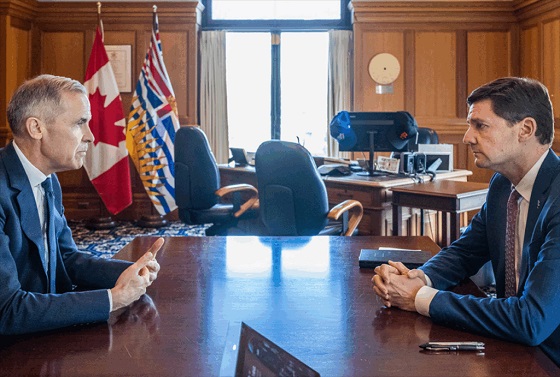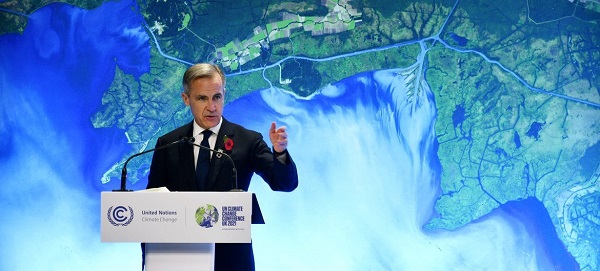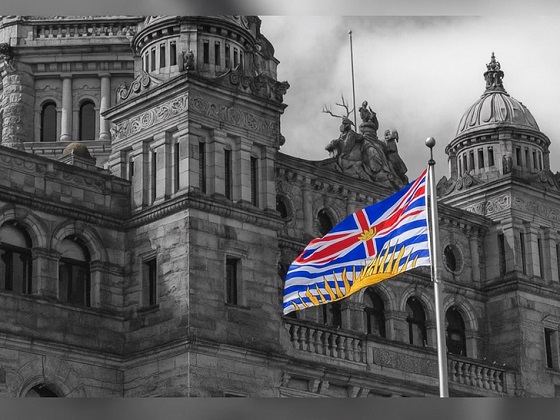Alberta
New tax bracket among features of Alberta’s 2024 Budget
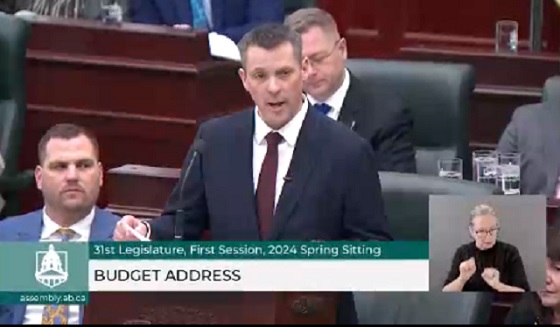
Budget 2024: A responsible plan for a growing province
Budget 2024 is a responsible plan to strengthen health care and education, build safe communities and manage resources wisely to support a growing Alberta.
With a steady focus on fiscal responsibility and wise spending, Alberta’s government will continue to meet the needs of Albertans today and tomorrow. Budget 2024 presents three more years of balanced budgets, beginning with a forecast surplus of $367 million in 2024-25. Budget 2024 strengthens the vital services Albertans rely on and ensures those services remain sustainable over the long run.
“Alberta is growing. Budget 2024 is a plan that manages the pressures faced by a growing province today while securing the future for generations who follow. I’m proud of the choices we made in this budget that support Albertans’ top priorities and prepare our province to meet the challenges that lie ahead. Budget 2024 invests today and saves for tomorrow so we can continue to be the nation’s economic engine.”
Budget 2024 is a responsible plan that puts Albertans and Alberta families first by investing in their health, education, safety, and economic growth and success. Priority investments include:
- Health and mental health supports: $26.2 billion in operating dollars, a 4.4 per cent increase over the forecast for 2023-24.
- Education supports: $9.3 billion in operating expenses, a 4.4 per cent increase from last year, to support record enrolment growth, hire hundreds more education staff including teachers and educational assistants, and support students with specialized needs.
- Social supports: $2.9 billion in 2024-25 to Albertans through the Assured Income for the Severely Handicapped program, the Alberta Seniors Benefit and other social support programs, plus $355 million for Alberta Child and Family Benefit payments to help low-income families, indexing payments to inflation and providing for more eligible clients.
- Workforce supports: An increase of $102 million over three years to add 3,200 apprenticeship classroom seats in high-demand areas and support curriculum updates to the apprenticeship program, as well as $62.4 million over three years to expand physician education, including through rural health training centres.
- Public safety supports: $1.2 billion in 2024-25 operating expense for Public Safety and Emergency Services to support police and mental health crisis teams, deploy street-level police officers to tackle crime in Calgary and Edmonton, and provide $74 million to the Alberta Emergency Management Agency.
- Wildfire supports: $151 million operating expense over the next three years for enhancements to the Wildfire Management Program and $55 million in capital investment for new firefighting equipment and facilities.
- The fiscal framework provides the flexibility the government needs to respond quickly to disasters and emergencies as they arise, including a $2-billion contingency.
- Water management and drought preparedness supports: $1.3 billion in capital funding over the next three years, including $251 million to better prepare the province for floods and droughts; $272 million for irrigation projects; and $539 million to support municipal water supply and wastewater infrastructure.
- Budget 2024 also provides additional operating support of $19 million over three years for the Strategy to Increase Water Availability and $9 million for water management initiatives.
- Capital supports: In total, $25 billion over three years in capital funding to build schools, hospitals, roads and other infrastructure, supporting 24,000 direct jobs and 13,000 indirect jobs across the province.
Alberta is well-positioned to remain the economic engine of Canada, with real gross domestic product forecast to grow 2.9 per cent in 2024, but the province continues to face challenges. While Alberta’s growing population is supporting economic activity and helping to ease labour shortages, it is also increasing demand for housing, health care, education and other public services. Ongoing geopolitical turmoil, uncertainty from federal government policies and high consumer prices risk dampening growth. Budget 2024 prepares Alberta to face those headwinds, with its responsible plan that invests in Albertans today and builds prosperity for tomorrow.
The fiscal framework introduced in spring 2023 requires the government to use at least half of any available surplus cash to pay down debt, freeing up more money to support Albertans. Taxpayer-supported debt will be reduced by a forecast $3.2 billion in the 2023-24 fiscal year. With the government’s commitment to paying down debt, the total taxpayer-supported debt will be $78.4 billion at the end of 2024-25.
High interest rates and the need to refinance maturing debt are driving up debt-servicing costs (the interest payments and fees on the debt) paid by taxpayers. As a result, debt-servicing costs are growing by $229 million in 2024-25 to $3.4 billion. While high interest rates on refinanced maturing debt are driving up those costs in the short term, the government’s strategic debt repayment plan will save Albertans millions in the long term.
The province is retaining more than $1 billion in investment earnings from 2023-24 in the Alberta Heritage Savings Trust Fund. Alberta’s government will also deposit another $2 billion from the Alberta Fund, increasing the value of the Heritage Savings Trust Fund to a forecast $25 billion. This is a significant investment in the future of Albertans and the province’s main long-term savings fund
Revenue
- In 2024-25, total revenue is estimated to be $73.5 billion, which is $2.1 billion lower than the third-quarter forecast for 2023-24.
- Revenue from personal income taxes is estimated to increase to $15.6 billion in 2024-25, up $365 million from the third-quarter forecast, and grow in the following two years as more people continue to move to Alberta.
- Corporate income tax revenue is estimated at $7 billion in 2024-25, down $176 million from the third-quarter forecast for 2023-24, but rising over the next two years.
- Non-renewable resource revenue is estimated to drop to $17.3 billion in 2024-25, from $19.4 billion forecast for 2023-24, and is forecast to pick up over the medium term.
Expense
- Total expense in 2024-25 is $73.2 billion, a 3.9 per cent increase from the forecast for 2023-24.
- Total expense is expected to be $74.6 billion in 2025-26 and $76.2 billion in 2026-27.
- Total operating expense in 2024-25 is $60.1 billion, a 3.9 per cent increase from the 2023-24 forecast.
- A contingency of $2 billion will help the province respond to disasters and emergencies and other in-year expense pressures, a $500-million increase from 2023-24.
Surplus
- A surplus of $367 million is forecast for 2024-25.
- Surpluses of $1.4 billion and $2.6 billion are forecast for 2024-25 and 2025-26, respectively.
Economic outlook
- In 2024, real gross domestic product is expected to grow by 2.9 per cent, up from the 2.6 per cent forecast at mid-year.
- Strong population growth is expected to continue at 3.7 per cent in the 2024 calendar year, down from 4.1 per cent growth in 2023.
Energy and economic assumptions, 2024-25
- West Texas Intermediate oil (USD/bbl) $74
- Western Canadian Select @ Hardisty (CND/bbl) $76.80
- Light-heavy differential (USD/bbl) $16
- ARP natural gas (CND/GJ) $2.90
- Conventional crude production (000s barrels/day) 507
- Raw bitumen production (000s barrels/day) 3,429
- Canadian dollar exchange rate (USD¢/CDN$) 75.90
- Interest rate (10-year Canada bonds, per cent) 3.70
Related information
Related news
- Budget 2024: Putting Albertans and Alberta families first (Feb 29, 2024)
- Budget 2024: Investing in safe, welcoming communities (Feb 29, 2024)
- Budget 2024: Maintaining Alberta’s economic advantage (Feb 29, 2024)
Alberta
Calgary mayor should retain ‘blanket rezoning’ for sake of Calgarian families
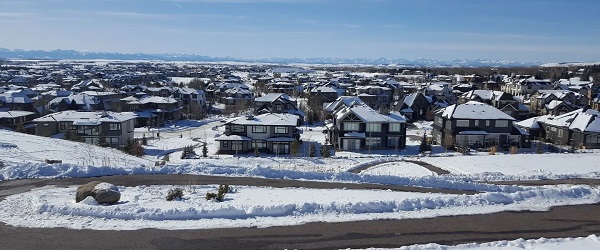
From the Fraser Institute
By Tegan Hill and Austin Thompson
Calgary’s new mayor, Jeromy Farkas, has promised to scrap “blanket rezoning”—a policy enacted by the city in 2024 that allows homebuilders to construct duplexes, townhomes and fourplexes in most neighbourhoods without first seeking the blessing of city hall. In other words, amid an affordability crunch, Mayor Farkas plans to eliminate a policy that made homebuilding easier and cheaper—which risks reducing housing choices and increasing housing costs for Calgarian families.
Blanket rezoning was always contentious. Debate over the policy back in spring 2024 sparked the longest public hearing in Calgary’s history, with many Calgarians airing concerns about potential impacts on local infrastructure, parking availability and park space—all important issues.
Farkas argues that blanket rezoning amounts to “ignoring the community” and that Calgarians should not be forced to choose between a “City Hall that either stops building, or stops listening.” But in reality, it’s virtually impossible to promise more community input on housing decisions and build more homes faster.
If Farkas is serious about giving residents a “real say” in shaping their neighbourhood’s future, that means empowering them to alter—or even block—housing proposals that would otherwise be allowed under blanket rezoning. Greater public consultation tends to give an outsized voice to development opponents including individuals and groups that oppose higher density and social housing projects.
Alternatively, if the mayor and council reform the process to invite more public feedback, but still ultimately approve most higher-density projects (as was the case before blanket rezoning), the consultation process would be largely symbolic.
Either way, homebuilders would face longer costlier approval processes—and pass those costs on to Calgarian renters and homebuyers.
It’s not only the number of homes that matters, but also where they’re allowed to be built. Under blanket rezoning, builders can respond directly to the preferences of Calgarians. When buyers want duplexes in established neighbourhoods or renters want townhomes closer to work, homebuilders can respond without having to ask city hall for permission.
According to Mayor Farkas, higher-density housing should instead be concentrated near transit, schools and job centres, with the aim of “reducing pressure on established neighbourhoods.” At first glance, that may sound like a sensible compromise. But it rests on the flawed assumption that politicians and planners should decide where Calgarians are allowed to live, rather than letting Calgarians make those choices for themselves. With blanket rezoning, new homes are being built in areas in response to buyer and renter demand, rather than the dictates of city hall. The mayor also seems to suggest that city hall should thwart some redevelopment in established neighbourhoods, limiting housing options in places many Calgarians want to live.
The stakes are high. Calgary is not immune to Canada’s housing crisis, though it has so far weathered it better than most other major cities. That success partly reflects municipal policies—including blanket rezoning—that make homebuilding relatively quick and inexpensive.
A motion to repeal blanket rezoning is expected to be presented to Calgary’s municipal executive committee on Nov. 17. If it passes, which is likely, the policy will be put to a vote during a council meeting on Dec. 15. As the new mayor and council weigh changes to zoning rules, they should recognize the trade-offs. Empowering “the community” may sound appealing, but it may limit the housing choices available to families in those communities. Any reforms should preserve the best elements of blanket rezoning—its consistency, predictability and responsiveness to the housing preferences of Calgarians—and avoid erecting zoning barriers that have exacerbated the housing crisis in other cities.

Austin Thompson
Alberta
ATA Collect $72 Million in Dues But Couldn’t Pay Striking Teachers a Dime
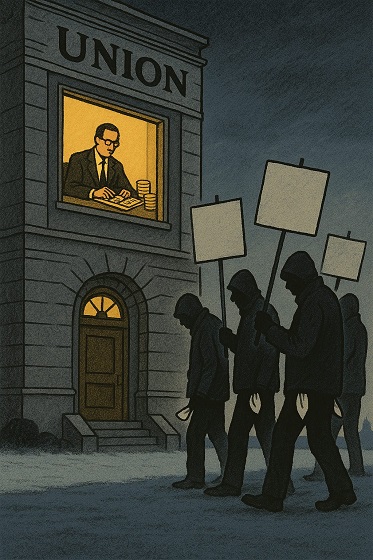
 Marco Navarro-Génie
Marco Navarro-Génie
They Built a Sustaining Rainbow Bureaucracy Instead of a Warchest
Alberta’s teachers walked off the job twice in a few years, which surprised anyone who still believed the old line that teachers avoid confrontation. A strike strips an organization to its essentials. It reveals whether a union carries real strength or only the appearance of it. When the Alberta Teachers’ Association entered a province-wide strike, it took on the posture of a century-old institution, but it drew on reserves of something far younger and far leaner. One question hangs in the air: How did a union that has existed since 1918 arrive at a major labour showdown with so little capacity to sustain its members?
Haultain’s Substack is a reader-supported publication.
To receive new posts and support our work, please consider becoming a free or paid subscriber.
Try it out.
The answer, it turns out, is that the ATA spent a century perfecting the art of growing and protecting itself, but not the teachers who pay for it.
Early unions understood that withdrawing labour meant stepping into a void. Wages vanished at the factory door. Families survived on whatever the union could provide. From small collections grew one of the essential principles of organized labour: A union prepares for conflict by saving in peacetime. It builds the means to protect its members when negotiations break down.
When unions matured, industrial organizations built strike funds large enough to hold firm through prolonged stalemates. These reserves became equalizers. Without them, employers waited for hunger to do the work. With them, a union could bargain in earnest. Strike pay bought time. Time forced movement. Time was power.
Consider what proper unions accomplish. CUPE maintains a national strike fund holding $132.8 million as of 2023. With 650,000 members, that’s about $200 per member in reserve. CUPE pays striking workers $300 per week from day one, rising to $350 after eight weeks. OPSEU maintains a $70 million strike fund, paying $200 per week plus $50 per dependent, increasing to $300 per week at week four.
By contrast, the ATA had $25 million in its Special Emergency Fund when the recent strike began. That money lasted just over two weeks, covering member benefits, not strike pay. For a union with 51,000 members, that’s less than $500 per teacher. After those two weeks, the Association drained its general cash reserves. By the end of the three-week strike, the SEF was depleted. Compare this to CUPE’s $132 million for 650,000 members or OPSEU’s $70 million for 180,000 members, and the ATA’s inadequacy becomes stark.
A century of life gives any organization the chance to build such strength. Over decades it becomes serious. Over a century it becomes formidable. Yet when the association decided to strike on October 6, 2025, it had nothing approaching the reserve needed for a long contest. A union prepared for endurance needs a fund measured in the high tens of millions, not the low twenties. That cushion was missing.
Of course, it was missing. Building a war chest means acknowledging you might actually have to fight a war. Far safer to build a peacetime palace and hope nobody notices when the enemy arrives at the gates.
This weakness grew from the inward turn that overtakes institutions with stable revenue and public status. What begins as a tool for members becomes an organism that primarily protects itself. After the Teaching Profession Act of 1936 entrenched its place in Alberta’s landscape, the ATA expanded like any other public body—without constraint or self-examination. Staff increased. Departments multiplied. New programs became permanent fixtures. Over time, the structure thickened into bureaucracy.
Robert Michels observed more than a century ago that organizations drift toward oligarchy because staff become the custodians of continuity. Members cycle in and out. Staff remain. As this instinct grows, the organization develops a belief that its first duty is to preserve itself. The ATA is no exception. Salaries for staff, internal operations, communication units, legal services, research branches, and advocacy initiatives occupy the foreground of its budget. The association’s annual budget is approximately $50 million, with discretionary programming accounting for less than a quarter. The remainder goes to staff salaries, operations, and fixed expenditures. A strike fund becomes an afterthought. Annual fees for 2025-26 are set at $1,422 per teacher, generating roughly $72 million in yearly revenue. Where did it all go?
The ATA’s books are not open, but there is public evidence of where some spending goes. Much went to campaigns that had precious little to do with wages, benefits, or working conditions. The ATA maintains an elaborate apparatus devoted to social justice advocacy. It supports the Alberta GSA Network, produces extensive resources on sexual and gender minorities, runs a “Walking Together” reconciliation program complete with 25 Indigenous education facilitators, publishes anti-racism materials, maintains Diversity Equity Networks, and employs staff dedicated to promoting SOGI (Sexual Orientation and Gender Identity) inclusion in classrooms. When Premier Danielle Smith announced policies requiring parental notification for name and pronoun changes in schools, the ATA mobilized its complete communications apparatus to oppose the measures, with President Jason Schilling calling them “irresponsible and dangerous” and a “distraction from more important issues.” If that were so, Schilling allowed his organization to be distracted.
I am not passing judgment on whether their causes lack merit or that teachers shouldn’t care about them. That’s their business and their money. But a union exists first and foremost to protect the material interests of its members. When teachers lose a month’s salary because their union spent decades building a rainbow bureaucracy instead of a strike fund, the priorities become clear. The ATA allocated resources to produce toolkits on creating “SOGI-inclusive classrooms” and funded campaigns about transgender policy while its Special Emergency Fund remained woefully inadequate. It hired facilitators to deliver workshops on dismantling anti-Indigenous racism, but couldn’t pay striking teachers a dime. This is ideology dressed up as unionism, performance masquerading as protection.
Haultain’s Substack is a reader-supported publication.
To receive new posts and support our work, please consider becoming a free or paid subscriber.
Try it out.
And here’s the greater irony: when teachers walked the picket lines, union executives kept drawing their salaries. Strike or no strike, the apparatus hummed along. The people running the ATA never missed a paycheque while the members they represent watched their bank accounts drain. In the 2025 strike, teachers lost a month’s salary. In return for this sacrifice, they gained precisely nothing. The settlement forced upon them by the government’s Back to School Act offered no improvement over what was available before they walked out. In fact, 89.5 per cent of teachers had already rejected this very offer on September 29, before the strike even began. In an era of persistent inflation, that lost income hurts. It hurt while union apparatchiks cashed their cheques on schedule.
The pattern of misplaced priorities extends beyond budgeting. When governments announce reforms, the ATA responds with press conferences, research papers, social media campaigns, and policy briefs. These are the tools of a professional bureaucracy, revolutionary in rhetoric, managerial in practice. They convey activity. They project influence. They cost a fortune. The ATA spent approximately $1.2 million on communications advocacy campaigns. Yet none of these tools matter when the government decides to hold firm during wage negotiations. Only endurance matters. Endurance rests on savings. Discipline has been scarce, but glossy newsletters have been plentiful.
The ATA fashions itself as the vanguard of progressive change, draping its pronouncements in the language of social justice and systemic transformation. It speaks like Che Guevara but budgets like a mid-tier insurance company. This is the defanged wolf: all growl, no bite. When push comes to shove, when teachers actually need material support to withstand a strike and make it count, the revolutionary rhetoric evaporates like morning dew. What remains is a comfortable administrative class that has confused advocacy theatre with actual power.
For a union that seeks to control so much of the province’s educational life, the ATA demonstrated a remarkable inability to control its own strike capacity. When the moment arrived to exercise the most fundamental power a union possesses—the withdrawal of labour—it had nothing. This is not the behaviour of a serious labour organization. This is the behaviour of a professional association that occasionally remembers it is supposed to be a union.
The ATA speaks of solidarity and resolve. It encourages teachers to show unity. It frames strikes as moral moments. It talks tough, pushed by its political branch, the NDP. Yet solidarity without resources is fragile. Resolve without savings falters when the bills arrive. A union that accepts going on strike without the means to sustain its membership hands the employer a strategic advantage from the outset. Employers read the same budgets. A union with a thin reserve can shout but cannot stand long, no matter what assurances Nenshi and their political allies make. The employer knows time will do the work. The people insulated from this reality are the NDP MLAs who cheered them on and the union administrators whose paycheques never depend on winning the fight.
It becomes difficult to tell whether the ATA has become an arm of the NDP or whether the NDP serves as the political branch of the ATA. Either way, the relationship has proven costly and fruitless. Opposition leader Naheed Nenshi stood ready with soundbites throughout the strike, encouraging teachers to hold firm while offering nothing of material value. NDP MLAs treated striking teachers and disrupted students as convenient instruments to embarrass the government, cheering on a labour action that could never succeed without the financial backing to sustain it. The enemy of your employer is not necessarily your friend. An independent union would have recognized this and built its strength accordingly, rather than spending resources and political capital on an alliance that delivers applause but not wages.
But it’s a professional association and not a conventional trade union, many will say. Members chose to strike against the leadership’s recommendations. That only seals the argument: It is an admission that the organization has no business going on strike. And if the membership voted for a strike, the leadership should have resigned. No youth leader would ever accept leading Girl Guides into a battlefield against seasoned warriors.
If the NDP functions as the political arm of the ATA, then the union has wasted considerable time and treasure on a supremely ineffective partner. A union serious about protecting its members would invest in strike capacity, not in subsidizing a moribund political movement that cannot deliver victories.
The institutional incentives explain much of this failure. Once an organization builds programs and layers of administration, cutting them becomes painful. Every department has defenders. Every initiative has champions. A strike fund has no constituency except prudence, and prudence has no allies among radicals. Prudence is no match for the seductive appeal of another communications coordinator or tattoo-covered diversity officer. Virtue-signalling solidarity wants no sacrifice. It is easier still when the people making these decisions know they will be paid regardless of whether the teachers they represent can hold out through week three of a strike.
Alberta teachers should demand clarity. They have paid dues for generations. They are told the association exists to protect them. Protection cannot be rhetorical. It must take the form of financial strength when the moment demands it. If the ATA built a bureaucracy instead of a war chest, if it prioritized the comfort of its administrative class over the security of its members, then teachers deserve that truth without varnish. They deserve to know why their union leadership never missed a meal while asking them to tighten their belts for the cause.
The defanged wolf is hurt now. It lashes out with its claws, backing recall campaigns against elected officials and organizing petitions to defund non-ATA school instruction. A Calgary high school teacher and ATA governing council representative wants to end public funding for Alberta’s independent schools, where roughly 2,000 teachers work outside ATA membership, costing the association approximately $2.84 million in foregone dues revenue annually. The petition to defund independent schools masquerades as concern for public education but reeks of institutional self-interest. Those 2,000 teachers represent nearly $3 million in annual dues that never reach ATA coffers. The defunding campaign is not about protecting students. It is about eliminating competition and conscripting teachers into membership. This is the Borg logic of an assimilating monopoly, not solidarity.
Wolves can be declawed, too. A union that cannot win at the bargaining table but insists on fighting everywhere else will find itself further diminished, further isolated, and ultimately less able to serve the teachers who still pay its bills. Vindictiveness is not a substitute for competence, and performative rage cannot replace the strength that comes from prudent preparation.
A century of dues offered the ATA a chance to build real power for its members. That chance slipped away into offices, programs, campaigns, and the salaries of people who never had to worry about surviving a strike because they were never actually on strike. The next century should begin with a different understanding of duty, rooted in prudence rather than performance, in stewardship rather than self-preservation, and in the recognition that a union leadership that doesn’t share the risks of its members has no business sending them into battle.
A defanged wolf can howl all it wants. Until it grows its teeth back, no one needs to take it seriously.
To receive new posts and support our work, please consider becoming a free or paid subscriber.
Try it out.
-
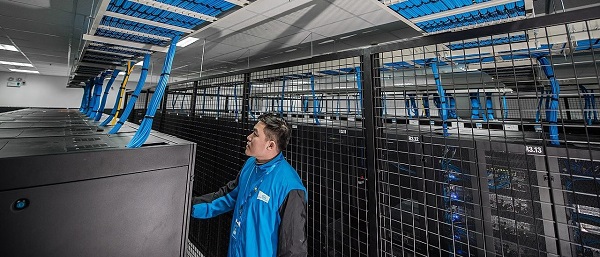
 Artificial Intelligence1 day ago
Artificial Intelligence1 day agoAI Faces Energy Problem With Only One Solution, Oil and Gas
-

 Health1 day ago
Health1 day agoLack of adequate health care pushing Canadians toward assisted suicide
-
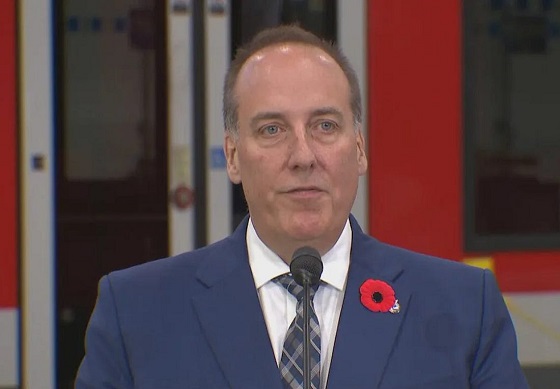
 National1 day ago
National1 day agoWatchdog Demands Answers as MP Chris d’Entremont Crosses Floor
-

 Media1 day ago
Media1 day agoBreaking News: the public actually expects journalists to determine the truth of statements they report
-
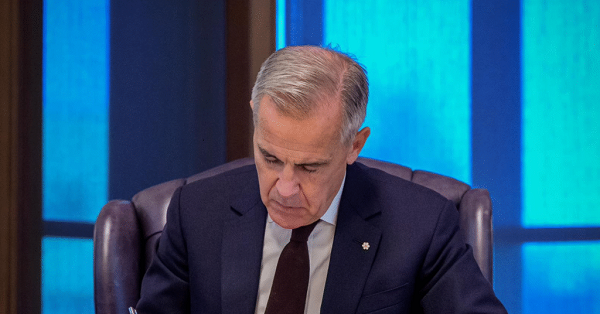
 Business22 hours ago
Business22 hours agoLiberal’s green spending putting Canada on a road to ruin
-
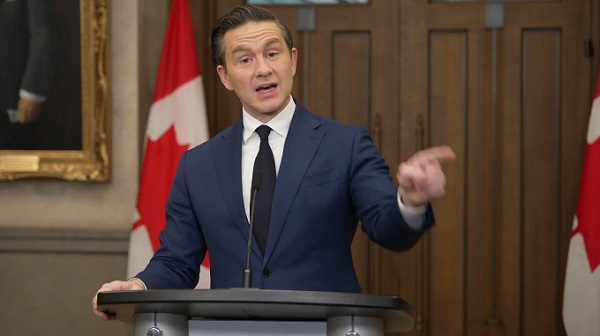
 Artificial Intelligence1 day ago
Artificial Intelligence1 day agoAI seems fairly impressed by Pierre Poilievre’s ability to communicate
-

 Alberta1 day ago
Alberta1 day agoATA Collect $72 Million in Dues But Couldn’t Pay Striking Teachers a Dime
-
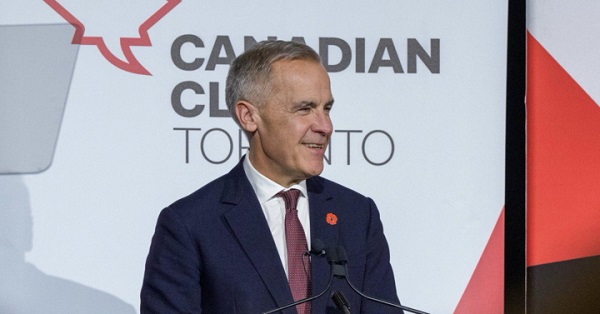
 Business22 hours ago
Business22 hours agoCarney doubles down on NET ZERO



